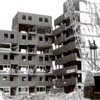Manchester England, Northern Community, Madchester, Hac, PSV Club, Buildings, House, Dance
Manchester Music Scene
Northern Soul: Music Scene in northwest England, UK
Manchester Music Venues
Manchester Music Scene
Although other cities such as Rome or Prague are prettier there’s something about Manchester that is magnetic. It may not be as big as London but it oozes a charming edginess through the brutal industrial remnants and the pervasive swagger of its people.
Most of my memories of Manchester are from my student days when the music scene was more vibrant than ever and the city was trying to be reborn, but I knew it as a kid too. I wasn’t really into the student thing and used to walk, cycle and dance my way round the city, getting to know its nooks and crannies. But some of the most poignant spaces are now no more. The Victorian Corn Exchange – where I used to get my haircut, buy LP’s and books under one massive domed roof is rebranded as The Triangle shopping centre.
The city’s architecture blusters and swaggers just like many Mancs, from cocky Liam Gallagher to ballsy Ian Simpson. Manchester has a pride in the power of its industrial legacy and in being widely viewed as the cultural capital of the North of England. The fallen empire of mills and chimneys chafes against the cultural activity and thus produces edginess and quirky contrasts. At the über-trendy Haç – a favourite haunt of celebs, I ended up alone in the Hacienda‘s gents alongside a steaming gangster as he accidentally dropped his pistol in the urinal.
Ben Kelly’s other style venue, Dry 201, could have uplifted the seedy Oldham St locale but ended up as another gangster rendezvous. Dancing under the bullet-ridden ceiling of Hulme’s PSV Club, a reggae joint set up by Afro-Caribbean Public Service Vehicle (PSV) workers, the black doods upstairs grooved to reggae whilst well-off white kids danced down below to techno.
Some of the boldest spaces I’ve ever experienced are in this city of grit: the sombre chasm carved out of stone between convex/concave facades at the Library; the menacing Victorian Castlefield viaducts where railway lines and canal crunch into each other, stone and metal rumbling overhead. I used to pitch up and paint these viaducts from various angles but in those days it was decay set in decay. These days it is cleaned up heritage and although the city prospers a recent visit made me feel a lot of the raw power had been lost. So often those in power don’t recognise their own assets: maybe Manchester needs a Design director to prevent over-sanitisation of the city’s built environment?

Scanned photo of demolition of Manchester housing by architect Adrian Welch 1990
Sometimes the rawness is too much for a city’s leaders to bear and the bulldozers go in. We all know this story from cities around the world. In Hulme row after row of brick terraces were cleared for slab blocks and crescents in one of the largest public housing estates in Europe. I was drawn to this dangerous community adjacent to Mosside by the energy and by the richness of issues. The residents were seen as bad apples and the architecture of deck access, prefab panels and concrete was well out of fashion. But a thriving community had developed, from serious musicians to crusties and punks. For example, A Guy Called Gerald recorded ‘Voodoo Ray’ in his Crescent studio. There was a club, called the Milk Bottle I think, formed from knocking two Crescent flats together with a serious DJ cage. I only went there once, as the vibe was seriously criminal. Ironically the crescents were named after famous architects – Robert Adam, William Kent, etc.
I tried to record their fall in black and white photographs, observations and interviews, recorded in my book ‘Safe as Houses’. There was a massive show to mark their impending demolition all set up by the creative types who lived there – installation art, DJ’s, dare devil stunts. The residents were involved in designing the new Hulme so I hope it is successful. However, I suspect many of the social groups will have dissolved, thus another iteration on this crazy wheel of comprehensive redevelopment that seems to survive in the western world.
Manchester has many celebrated formal spaces – the Public Library reading room, Waterhouse’s City Hall, The Halle and the G-Mex – but also has a host of more informal spaces with strong presence. Affleck’s Palace was an institution, dank and smelly but somehow intriguing and an unmissable part of Saturday in town for many people, similar to London’s Camden Market but more immediate. Record shops like Eastern Bloc also became institutions with their own scene augmented by the presence of famous DJ’s and musicians giving you your change. The size and the attitude of the city meant celebrities were often approachable in a way unthinkable in London. People from 808 State to Corrie actresses always seemed happy to engage in a bit of banter. It’s this sense of community mixed with the edginess and swagger that works with the architecture to create a city that was once great, and still is.
Location: Manchester, Northwest England, UK
Manchester Buildings
Contemporary Manchester Architecture
Manchester Architectural Designs – chronological list
Manchester Architecture Walking Tours
Examples of Manchester Architecture welcome
Comments / photos for this Madchester – Mancunian Club Scene page welcome
